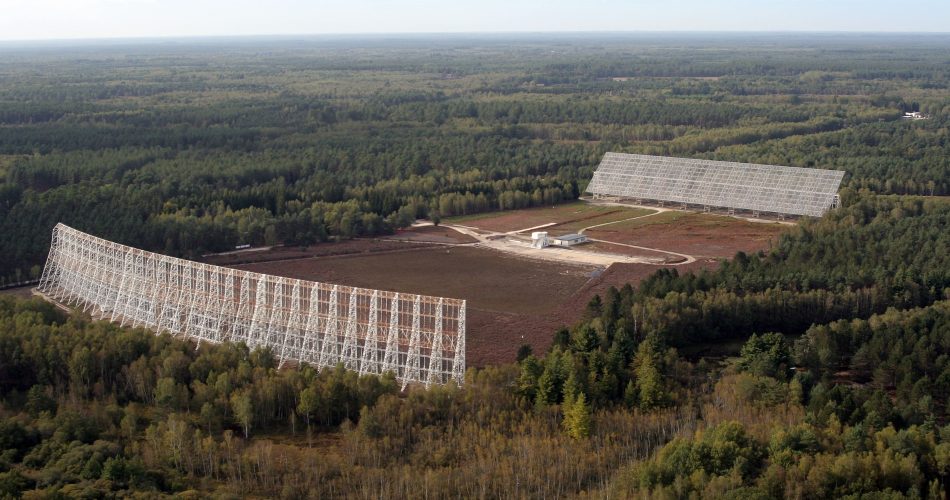Of smaller size but which remains imposing and of different design, let us quote also the radio-telescope of Nançay of the CNRS installed in the Cher in France put in service in 1965. It replaces the two former parabolas-radars of 7.5 m of diameter today exposed at the Caen Memorial.
Nançay is inspired by the model of Big Ear developed by the famous Dr. John D. Kraus (1910-2004) which was operational between 1963 and 1998. It had a swiveling plane 30 m wide and a fixed parabolic surface 21 m high, with the receiver near the center, 128 m away.
Big Ear made it possible to study the Andromeda galaxy M31 (1963) then to carry out the first survey of the extragalactic radiosources for the University of Ohio (1965-1971) before being dedicated to the SETI program from 1973 to 1995. We owe Big Ear the detection of the “Wow” signal in 1977. Big Ear was dismantled in 1998 and the land is now part of a golf course.
Nançay is the French version and twice as big as Big Ear. As seen on the right, the main radio telescope consists of two reflective systems, a movable “mirror” plane (at the bottom of the image) and a fixed “curved” mirror (in the foreground) of a ray curvature of 560 m. The movable reflector in elevation consists of panels forming a plane of 200×40 m which reflects the signals to a second fixed curved reflector of 300×25 m which focuses the signals on two receivers located 280 m distance to the center of the field and operating globally between 1 -3.5 GHz. The installation is equivalent to a parabola 100 m in diameter. Its resolution is about 1 “.
The Nançay observatory comprises 3 additional networks: the LOFAR interferometer which is integrated in a European network comprising around 50000 antennas, an interferometric radiohéliograph comprising 47 parabolas operating between 150-450 MHz intended for the study of the solar corona and eruptions , and a decametric network (RDN) consisting of 144 9 m high helical antennas tuned between 10-100 MHz mainly used to study the magnetosphere of Jupiter and the solar corona. These instruments are complemented by an ORFEES radiospectrograph consisting of a parabola of 5 m diameter dedicated to the study of space time, the Sun and the solar corona between 130 MHz and 1 GHz and finally the detectors of the CODALEMA program comprising in particular some 50 antennas and intended for the study of ultra-high energy cosmic rays between 20-200 MHz.
As explained in the book “Bioastronomy – The next steps” (Kluwer, 2011, pp. 315-355), in 1981 at the initiative of François Biraud, the decametric radiotelescope of Nançay was used as part of a program SETI, looking for monochromatic artificial signals in the environment of 102 nearby stars, without success. In collaboration with Jill Tarter of the SETI Institute, he realized two other campaigns in 1982, this time looking for artificial signals around 132 other stars at 18 and 21 cm wavelength, with no more results if not a better estimate of the background noise. In 1992, he reoffended by developing new programs SETI in Nançay, always in collaboration with Jill Tarter. But whether in Nançay, Arecibo or Parkes, antennas have still not captured any artificial signal of extraterrestrial origin. The research continues anyway.

hmm
Hi
tye gd
Ok
cock
helo